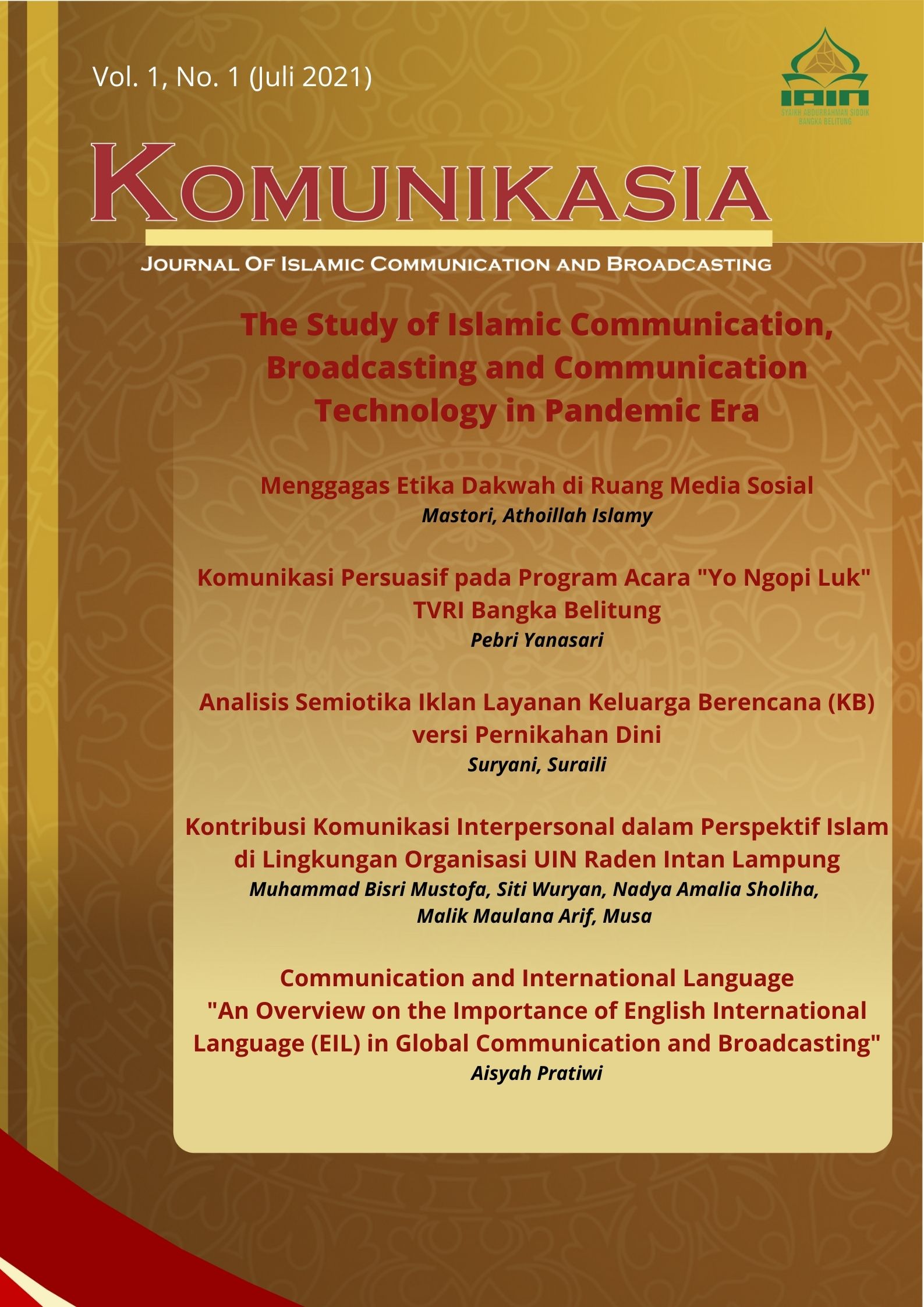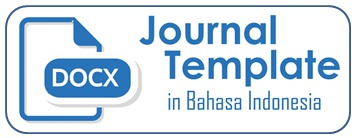ANALISIS SEMIOTIKA IKLAN LAYANAN KELUARGA BERENCANA (KB) VERSI PERNIKAHAN DINI
Abstract
Family Planning (KB) is one of the government programs aimed at limiting the number of children in a family and inhibiting the rate of population growth in Indonesia. To introduce the program, the government made an advertisement for KB service version of Early Marriage on television. These ads contain meanings that are indirectly conveyed through the symbols in the ad. The ad will be analyzed using Jurgen Ruesch's semiotic analysis model, classifying all verbal and nonverbal cues in sign language, action language and object language. The meaning of the symbol consisting of the language of the sign, the language of action and the language of the object that includes body communication such as gestures, facial communication, eyes and touch as well as space and time communication in the KB ad version of early marriage sends the message that early marriage is better avoided for the maturity and readiness of the couple in the household both mentally and physically.
Downloads
References
Badan Pusat Statistik. 2021. Hasil Sensus Penduduk 2020 Indonesia. Bps.go.id.
http://babel.bkkbn.go.id/?p=2260, akses 19 Juli 2021, pukul 08.00 wib..
https://bangka.tribunnews.com/2019/03/01/angka-pernikahan-dini-di-babel-memprihatinkan-nomor-tiga-tertinggi-di-indonesia, akses 19 Yuli 2021, pukul 08.00 wib.
JPPN.com https://www.jpnn.com/tag/pernikahan-dini, akses 23 Juni 2021, Pukul 23.30 wib.
Mulyana, D. 2000. Pengantar Ilmu Komunikasi. Bandung: Remaja Rosdakarya.
Sobur, A. 2017. Semiotika Komunikasi. Bandung: Remaja Karya.
Widyatama, R. 2007. Pengantar Periklanan. Yogyakarta: Pustaka Book Publisher.
Wiryanto. 2004. Pengantar Ilmu Komunikasi. Jakarta. PT. Grasindo.
Copyright Notice
Komunikasia: Journal of Islamic Broadcasting and Communication is under the Creative Commons Attribution 4.0 International (CC-BY 4.0) License, according to which:
1) Authors retain copyright and grant the journal the right to first publication, with the work simultaneously licensed under the Creative Commons Attribution (CC-BY 4.0) that allows the sharing of articles published with the acknowledgment of authorship and the initial publication in this journal.
2) The authors are authorized to make additional contracts separately for distribution of the version of the work published in this journal (for example, publication in an institutional repository or as a chapter of the book), as long as there is recognition of authorship and initial publication in this journal.
3) Authors are authorized and encouraged to publish and distribute their work online (for example, in institutional repositories or on their personal pages) at any time before or during the editorial process, as it increases the impact and reference of the published work.



















